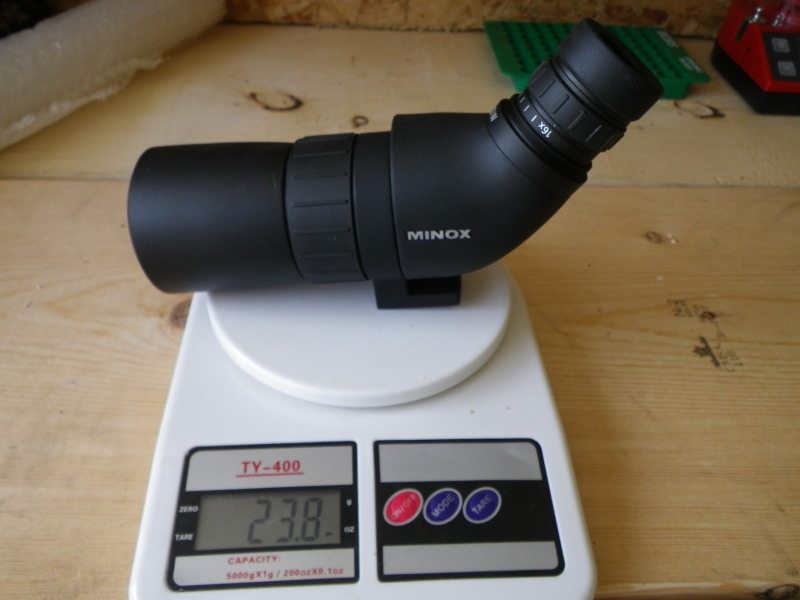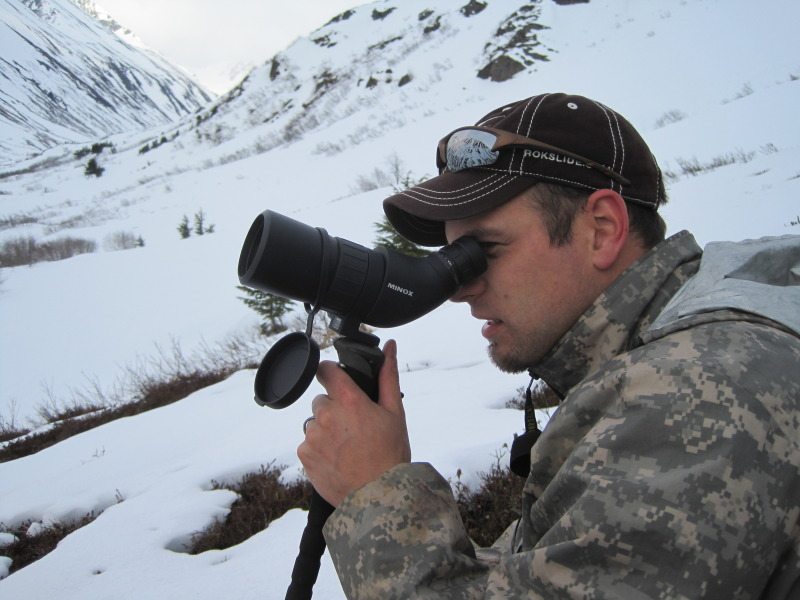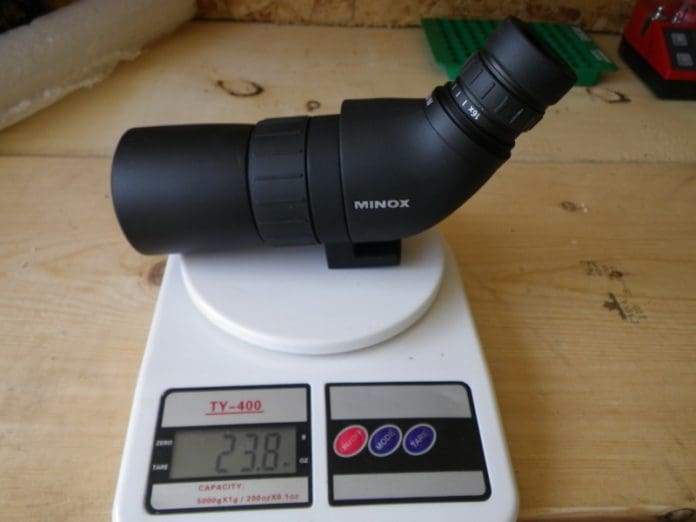Minox MD 50 Compact Spotting Scope
By Luke Moffat
The old saying goes, “You get what you pay for” and optics are certainly no exception to this rule. However, like anything else, there are bargains and solid value to be had if you look hard enough. The Minox MD 50 spotter is one such a bargain.
Specifications:
Price: $200-$299 (depending on where you purchase from)
Weight: 21.7 oz (advertised) 23.8 oz (weighed)
Objective: Size: 50mm
Eyepiece zoom: 16-30X
When I first opened the box, I was pleasantly surprised with how small it actually was. At less than 1.5 pounds, it’s half the weight of most 65mm spotting scopes. The scope is very compact and takes up very little pack space which is great for backpacking. I bought this scope with the idea of a “go light and fast” spotter. I use it when I’m going ultra-light, but I still need a spotter along on the trip.

I picked up the angled model because it’s what I am used to and prefer, but also because an angled model allows me to use a shorter and lighter tripod as well. I also like the option to run the spotter on the top of my trekking pole if I am really looking to save weight. The listed weight of the Minox MD 50 is at 21.7 oz, however when I checked it on my scale it read 23.8 oz. This discrepancy is most likely due to having the angled version vs. the straight version. The angled versions of most spotting scopes generally weigh more than their straight counterparts.
My previous lightweight spotter was a Nikon XL II which costs and weighs about 40% more than the MD 50. I prefer the fit and finish of the little Minox over the Nikon XL II. For my eyes, the Minox outperforms the Nikon XL II optically with the exception of low light situations. This is to be expected as the objective of the Nikon XL II is nearly 25% larger and gathers proportionally more light. The MD 50 shows a fair bit of chromatic aberration at the edges of high contrast transition areas, such as where snow and black rock meet. This is more pronounced at dusk and dawn. However, when using the Minox at midday with plenty of light, this scope is flat-out impressive. The 16-30 zooming power is versatile enough to use as a scouting spotter for sizing up antlers & horn.

Arguably the best ultralight scouting spotting scope out there is Nikon ED 50. It is listed at 22 oz with an eyepiece. However, at nearly 3 times the price of the Minox MD 50 it might not fit your budget. Given the price point the Minox MD 50, it’s a great value for anyone looking for a compact, lightweight spotter with surprisingly good optics. This little spotting scope might also appeal to those who want a compact, bang-around scouting spotter you can leave in the truck and take on trips when you don’t feel like hauling your big scope.


















